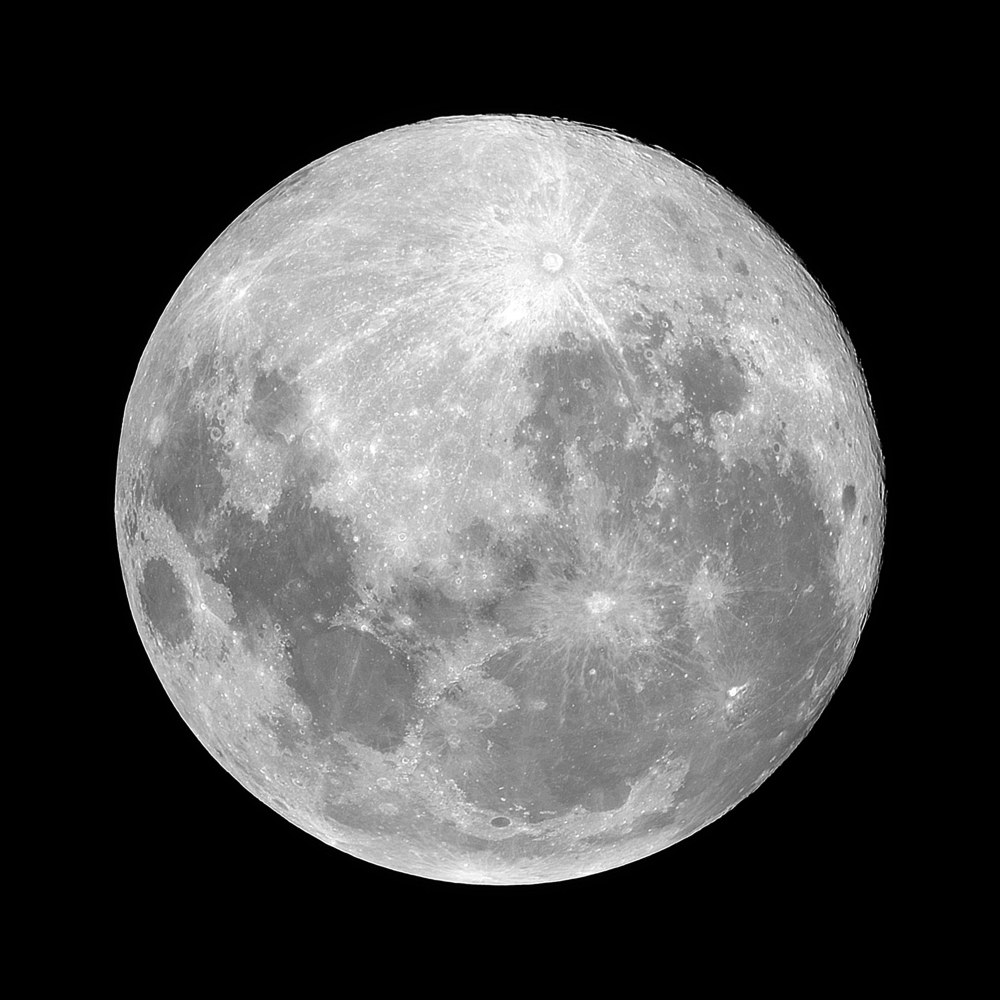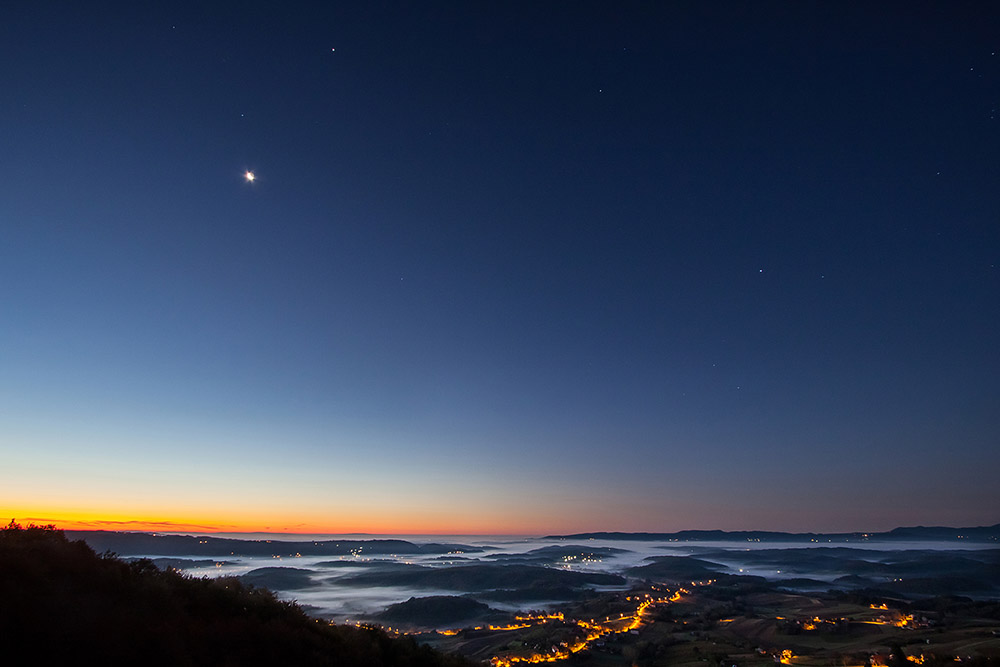
Would a large concave mirror suffice for low-power views of extended deep-sky objects?
A large concave mirror, even of low quality, has lots of light-collecting power. Would such a mirror suffice for low-power views of extended deep-sky objects, even if it didn't show stars as neat dots? For example, a 20-inch plastic mirror might be fairly inexpensive. My 7th-grade science teacher once let…

Were stars artistically depicted with diffraction spikes before the invention of the Newtonian reflector?
Were stars artistically depicted with diffraction spikes before the invention of the Newtonian reflector? If so, why? Stars were being drawn with points or spikes long before Isaac Newton announced his reflecting telescope in 1671. Just look at early works of art, flags, ancient coins, and the charts of the…

Does a comet's tail (or lack there-of) tell us what direction it's heading?
When Comet Holmes was heading away from Earth, we on Earth didn't see an angled view of the comet's tail. Was it tailless because of its motion? That is, would a comet also appear tailless if it were approaching, with Earth right in its path? It's impossible to tell where…

Will asteroid 99942 Apophis eclipse the Moon when it passes by?
When I heard that a 300-meter asteroid will approach Earth at a distance of only 18,000 miles in 2029, I figured it was time to break out the old slide rule. Wouldn't an object that big and close be able to eclipse the Moon, if it should pass in front…

Would a perfectly reflecting full Moon be just as bright as the Sun?
I've read that the full Moon has a magnitude of about -13 and an albedo of about 3%. That implies that if the lunar disk reflected 100% of sunlight it would appear more than 30 times as bright, or about magnitude -17. But since it has the same angular diameter…

What was that flashing light in the sky?
I'm new to astronomy (1½ months) and I live in New Jersey. Last night, July 31st, I saw a bright planet (I assume Jupiter) in the southwestern sky, and just below it what looked like an airplane with a flashing red tail marker — but it never moved. When I…

Can you use a replica of an 18th century New England sundial in Washington?
I have a museum’s pewter replica of an 18th-century New England sundial. The inscription says it was designed for latitude 42°. Can I use this sundial in Seattle, Washington? The iconic garden sundial, with triangular shadow-casting gnomon and horizontal plate, gives accurate readings at the latitude for which its hour…

How can you determine a sunsport's size compared to that of Earth?
Turn off the telescope's motor drive (if any). Count the number of seconds it takes for the sunspot to drift past crosshairs or any speck of dust that is visible in your eyepiece. The number of seconds equals the spot's breadth in Earth diameters. The method is approximate. If…

How could an astronomer living on the far side of the Moon verify Earth existed?
How could an amateur astronomer who lived her whole life on the far side of the Moon verify that Earth existed? Well, not by tuning in episodes of reality TV. Since the Moon has virtually no atmosphere, there is no mechanism (like ionospheric skip) by which radio signals from Earth…

Is it possible to have no full Moon in February during a leap year?
Everyone knows there can be two full Moons in a month. Is it possible to have no full Moon in a February containing 28 days? Yes, but only about four times in a century. This happened in 1999 and will next occur in 2018, assuming the phases are expressed in…

How did early astronomers calculate accurate solar system positions?
In the pre-computer age, say 50 years ago and back, how did astronomers calculate accurate positions of the Sun, Moon, and planets for predicting an eclipse or a transit of Venus? They did it by hand, with the help of numerical tables. These weren’t the trigonometric and logarithmic tables you…

What’s the phase of the Moon during the Perseids?
What’s the phase of the Moon during the Perseids? Use this simple calculation to figure it out.

What's my naked-eye magnitude limit?
How can I find out my naked-eye magnitude limit? Count stars inside the Great Square of Pegasus, which is well placed on November evenings. If you can see only two stars within the square, you are reaching visual magnitude 4.6 and your skies are probably light polluted. If you spot…

Can telescopes increase an object’s surface brightness?
I normally can’t see the Triangulum Galaxy (M33) with the naked eye, but it’s easy in a rich-field telescope. So how can you claim (June issue, page 128) that a telescope never increases an object’s surface brightness? The explanation has nothing to do with optics and everything to do with…

Will Mercury and Venus ever transit the Sun simultaneously?
Will Mercury and Venus ever transit the Sun simultaneously? Yes, but this will not happen until AD 69,163. A transit can take place only when Mercury or Venus is near an ascending or descending node, meaning a crossing point of its orbit on the plane of the ecliptic. For this…

When's the next blue Moon?
When's the next blue Moon? To read the full story with a schedule that shows all blue Moons through 2020, see our article "What is a Blue Moon?" Here's the abbreviated version: In 1999 Sky & Telescope admitted to its “blue Moon blooper,” an error that had crept onto the…

When is the earliest sunrise of the year?
The earliest sunrise of the year doesn't always occur on June 20th (the solstice), which has the longest day. Why? The earliest sunrise actually depends partly on latitude. In 2004, for latitude 40° north, it was June 13th. For 50° north, the earliest sunrise was on June 16th. At 30°…

What's the distance to Polaris?
I have three astronomy programs on my computer that give three different distances for Polaris. I just obtained a fourth program, and it says the distance is unknown. What’s the problem? Those new to astronomy expect the distances of bright stars to be very accurately known, but many still aren’t.…

My "Flapping Roof" Observatory
By day my observatory looks like an ordinary (if rather grandiose) garden shed. At night the roof sections go down and back up. They "flap" like a bird's wings.

Seeking Thin Crescent Moons
Here are some tips for hunting one of nature's most captivating sights.
